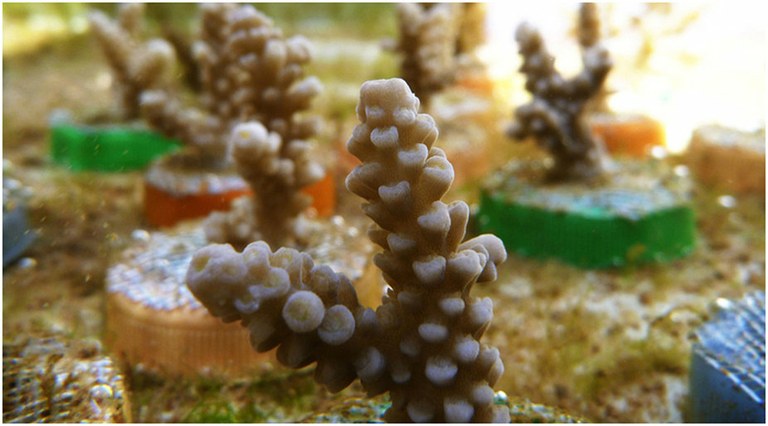When corals are exposed to new lighting conditions, they still try to maintain the same calcification patterns based on their “programmed” circadian rhythms. Only after at least 24 hours do they alter their calcification patterns to match the new lighting conditions.
Researchers measured the calcification patterns of Red Sea scleractinian coral Acropora eurystoma over a period of 48 hours under four different light treatments: ambient (natural) light, a fixed 10hr-on/14hr-off light/dark schedule, constant (24hr) light, and constant dark.
As expected, the calcification rates for the ambient and fixed light/dark schedules increased during the lit periods while either no calcification or mild dissolution occurred during dark periods. Light = calcification. Dark = no calcification. No surprise.
Now, things got interesting when the Acroporas were exposed to constant light. You would expect consistent calcification during the entire 24 hours under constant light. However, during the first 24 hour period, the coral still exhibited a similar cyclical calcification pattern as the corals kept under ambient and light/dark schedules. Only on the second day did the calcification rate of the Acros under constant light start to level out throughout the course of the day.
Under constant dark lighting condition, there was precipitation of CaCO3 throughout the 48-hour experiemnt. However, there was still some skeleton extension during the first 12 hours, which suggests that “skeletal extension persisted until energy reserves that originate from photosynthate translocation by dinoflagellates were depleted,” according to the researchers. They go on to state: “This finding indicates that the calcification process keeps going during the first subjective daytime without external light and without new photosynthate production by the algal symbionts.” During the first 24 hours, the Acropora were still trying create skeleton according to their previous circadian rhythm.
The research is published in Scientific Reports.











0 Comments